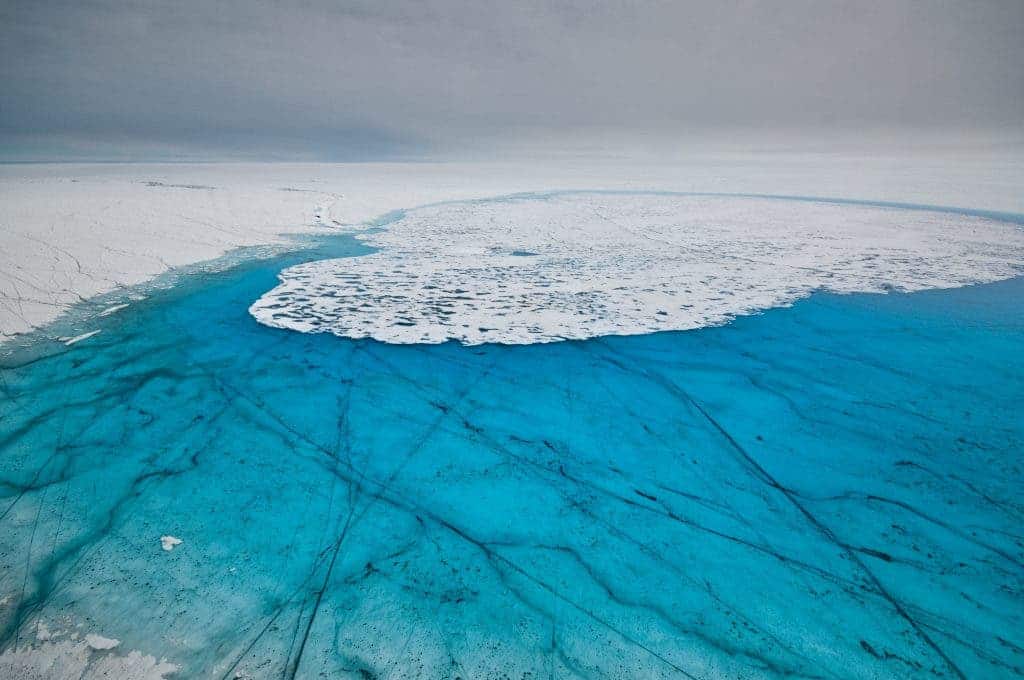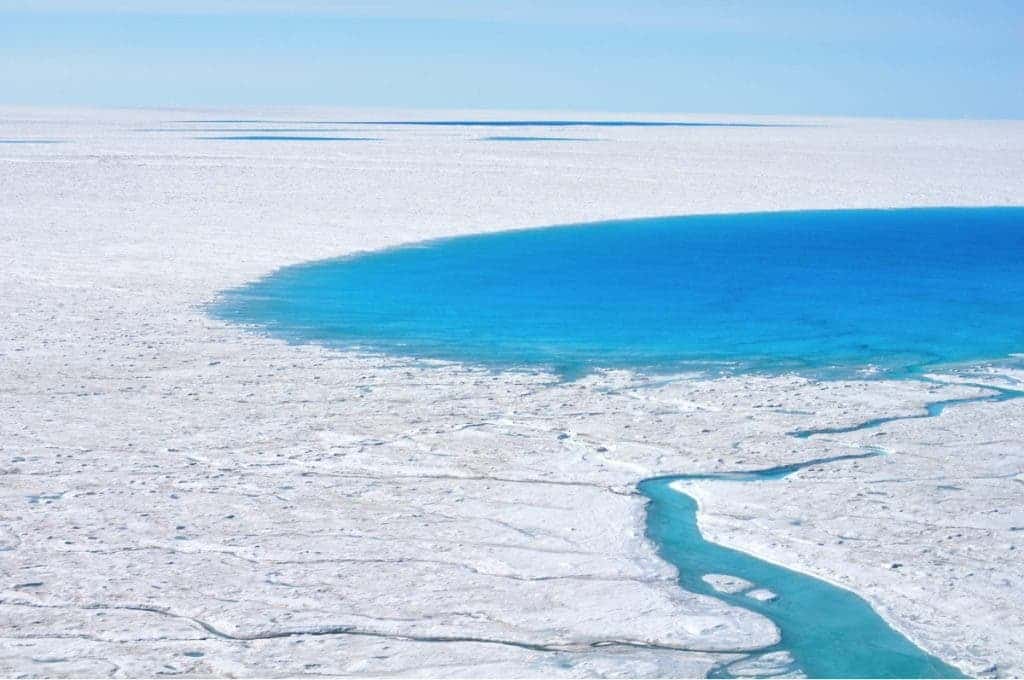Geoscientists have finally unraveled one of Greenland’s long-standing mysteries: how billions of gallons of water can drain in a matter of hours. They believe that this might also help us better understand how sea levels will rise in the future.

Every summer, Greenland’s ice starts to melt and “pockets” of water start to form – I use the quotes because these pockets can reach enormous sizes. They are basically large lakes, superglacial lakes (because they form on ice). In 2006, Greenland’s North Lake, a 2.2 square-mile (5.6 square kilometers) “pocket” lost almost 12 billion gallons of water in less than two hours, and researchers couldn’t figure out where all the water went. This is not a singular case; similar drains have been observed several times across Greenland’s surface. Now researchers at MIT, Woods Hole Oceanographic Institution (WHOI) claim they’ve finally cracked that mystery.
“We’ve found a mechanism that demystifies what’s happening.” The lead study goes on to say, “We know that the ice sheet will continue to increase its contribution to sea level rise over the coming years. The implications of this study show us more of how these processes will play out.”
It was clear that the water has to seep through some fractures in the ice, but it was not known what causes these fractures. Ironically, it’s actually the water. In this new study used GPS technology and found that the hydro-fractures form from tension-related stress caused by movements of the ice sheet. These movements are, in turn, triggered by the trickling meltwater.When summer comes, meltwater drains to the bed from the ice surface through crevasses or moulins and it causes the area within and around the basin to “jack up”; it also decreases the surface area of the ice-sheet bed that’s in contact with the underlying bedrock, acting like a lubricant for the entire lakebed.
“We found that before we get the main expression of the lake drainage, there is a period of time (about six to 12 hours) where uplift and slip increase,” said Laura Stevens, a glaciology doctoral candidate with the Massachusetts Institute of Technology/Woods Hole Oceanographic Institution (MIT-WHOI) Joint Program. “That motion is enough to take the surface of the ice sheet and put portions of it in high tension that allows cracks to start forming.”
While most of Greenland’s superglacial lakes drain slowly, some 13% of them drain quickly, vanishing in less a day.
“The images would show the lake there one day, and gone the next day,” said first author of the new study, Stevens adds. “So we’ve known for the last 10 to 15 years that the water could disappear quickly.”

Credit: Laura A. Stevens
There is more to this study than just understanding the glacial dynamics that enable fast drainage – this could have implications for global sea levels.
“It is critical to understand how and why these lakes drain in order to predict how much mass the ice sheet will contribute to sea-level rise in our warming climate,” Stevens says. “We find that while lakes are forming inland, they probably won’t drain by this … mechanism. The inland lakes will more likely drain their water via surface stream runoff, which transfers the water to the bed in more coastal areas of the ice sheet. So, while we see inland ice beginning to speed up as more melt happens inland, the draining of inland lakes likely won’t exacerbate the situation.”
While there are no definite results at the moment, it seems that this process won’t actually affect sea-level rise, but it could enable researchers to develop better climate models.
Richard Alley, a professor of geosciences at Penn State University who was not involved in the research thinks this may be especially useful.
“For Greenland, the worst possible case won’t be quite as bad as people might have thought,” says Alley, who was not involved in the research. “I think that the big contribution here is to other scientists in the field; we will use these interesting and useful results to improve models and projections, and to guide further research.”






